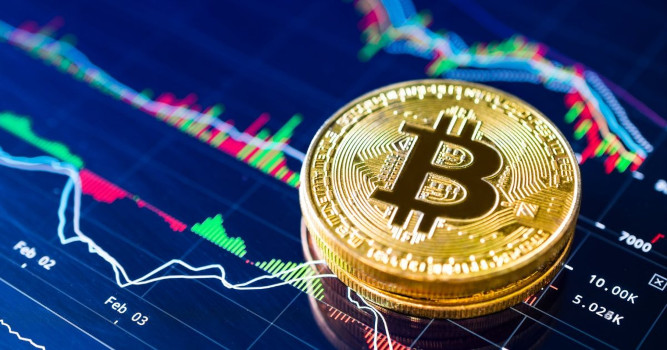Where does money go when crypto markets crash? People use real money to buy crypto, but then what happens to the money? When the value of a cryptocoin tanks the money can’t just vanish.
Individual coins of cryptocurrency are usually created by computers performing complex and lengthy calculations. When a computer is working on solving the calculations that go into generating a coin it is called “mining”.
Once a person’s computer has mined a cryptocurrency coin then the coin can be sold, usually through an on-line exchange or marketplace. The crypto coin is exchanged in the marketplace for another currency, usually government-backed money such as American dollars.
People tend to think of cryptocurrencies as they would other currencies like dollars and Euros, but for the sake of this discussion it might be easier to think of these digital currencies, such a Bitcoin, as a commodity. They are something which can be created, sold, and traded. Much like stamps or baseball cards.
The value of a crypto coin is a reflection of how much people feel it is worth, how much it is desired in the market. If a slew of businesses suddenly start accepting Bitcoin in exchange for goods and services then the price of Bitcoin goes up. If businesses stop accepting Bitcoin or new government regulations make trading in Bitcoin harder then the value will go down.
Regardless of how much a Bitcoin (or other cryptocurrency) is trading for doesn’t have an impact on the money supply of government-backed currencies like Dollars, British Pounds, and Euros. The value of Bitcoin going up doesn’t generate government-backed money and Bitcoin dropping in value doesn’t wipe out money. When a cryptocurrency tanks it doesn’t change how much money is in the world, just the value of this one commodity.
When the value of a cryptocurrency tanks, say from $50,000 to $10,000, money isn’t being created or destroyed. What is happening is the amount of dollars people are willing to pay for the cryptocurrency is changing.
This might be easier to consider using a physical object as an example rather than a virtual currency. Imagine for a second your friend wins a baseball card. He doesn’t want it all that much, but he does want a snack so he sells it to you for the low price of $5. Now he has $5 and you have the card. You hear baseball cards can be worth a lot of money someday. You tell a bunch of your friends this and one of them offers to buy the card off you for $100. His friend hears baseball cards are selling for a lot of money and then buys it for $500.
This urge to buy something thinking it’ll be worth a lot someday is called speculation and it’s a big part of what fuels the cryptocurrency market. The original card hasn’t changed, the amount of dollars in your neighbourhood are the same. It’s just that now your original buddy has $5, you’ve got $100, and the last guy to buy the card is out $500. The number of dollars and baseball cards in your neighbour hasn’t changed, the location of each has just been shuffled.
Now what happens when everyone in the neighbourhood discovers most baseball cards aren’t all that valuable? That apart from a few rare exceptions, baseball cards mostly sell for under $10? The last guy now has a baseball card he will probably only be able to sell for $5. The market has tanked. He can sell the card for $5, or he can hold on to it hoping another buying craze will come along.
Bitcoin (and other cryptocurrencies) operate much the same way. People buy coins when they think the price will go up and they try to sell coins before the perceived value tanks. Money isn’t being made or destroyed, just transferred around in exchange for the virtual coins.

Comments are closed, but trackbacks and pingbacks are open.